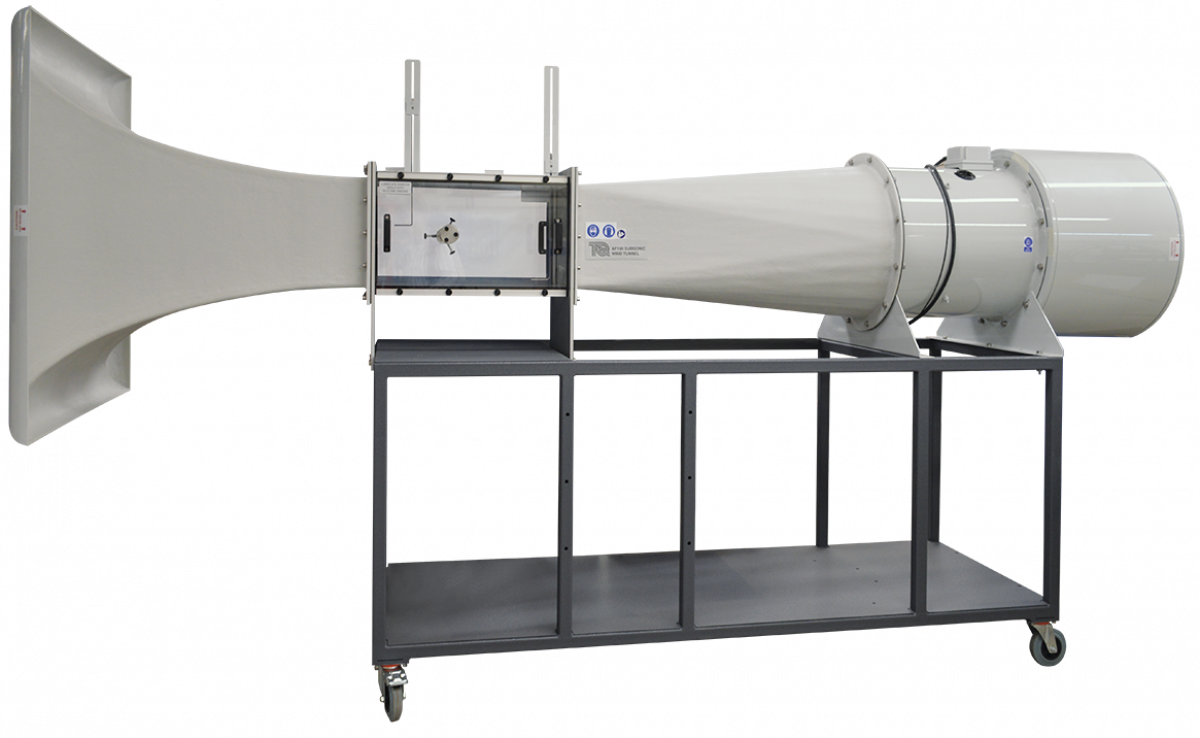Key Features:
- A wind tunnel for conducting experiments in aerodynamics • Safe, compact, open-circuit suction wind tunnel – a cost-effective solution when compared to full-sale wind tunnels
- The optional ancillaries work with TecQuipment’s Versatile Data Acquisition System (VDAS®)
- Additional models and instruments available to extend the range of experiments
- Wind tunnel controls mount on a separate, free-standing instrument frame for ease of use
- The wind tunnel has wheels for easy mobility
- Also available as a starter set with a basic lift and drag balance and a set of models
Description:
- Air enters the tunnel through an aerodynamically designed effuser (cone) that accelerates the air linearly.
- It then enters the working section and passes through a grille before moving through a diffuser and then to a variable-speed axial fan.
- The grille protects the fan from damage by loose objects. The air leaves the fan, passes through a silencer unit and then back out to the atmosphere.
- A separate control and instrumentation unit controls the speed of the axial fan (and the air velocity in the working section). The control and instrumentation unit also includes manometers and electrical outlets to supply electrical power to other optional instruments.
- A metal frame supports the wind tunnel. The frame includes lockable castors for convenient mobility.
Learning Outcomes:
TecQuipment can also supply optional models and instruments to extend experiments, giving:
- Flow past bluff and streamlined bodies with pressure and velocity observations in the wake
- Investigations into boundary layer development
- Influence of aspect ratio on aerofoil performance
- Performance of an aerofoil with flap, influence of flap angle on lift, drag and stall
- Pressure distribution around a cylinder under sub and super-critical flow conditions
- Study of characteristics of models involving basic measurement of lift and drag forces
- Study of the characteristics of three-dimensional aerofoils involving measurement of lift, drag and pitching moment
- Study of the pressure distribution around an aerofoil model to derive the lift and comparison with direct measurements of lift
- Flow visualisation
Specifications
- Dimensions and weight (assembled): 3700 mm x 1065 mm x height 1900 mm and 293 kg
- Space needed: Solid, level floor: allow at least 2 m of free space around the inlet and 4 m at the outlet
- Working section: 305 mm x 305 mm, and 600 mm long.
- Air velocity: 0 to 36 m.s–1
- Electrical supply (three-phase):
- 220 VAC to 240 VAC 50 Hz/60 Hz (20 A)
- 380 VAC to 440 VAC 50 Hz/60 Hz (16 A)
- Operating temperature range: +5°C to +40°C
For details see the catalog below:

